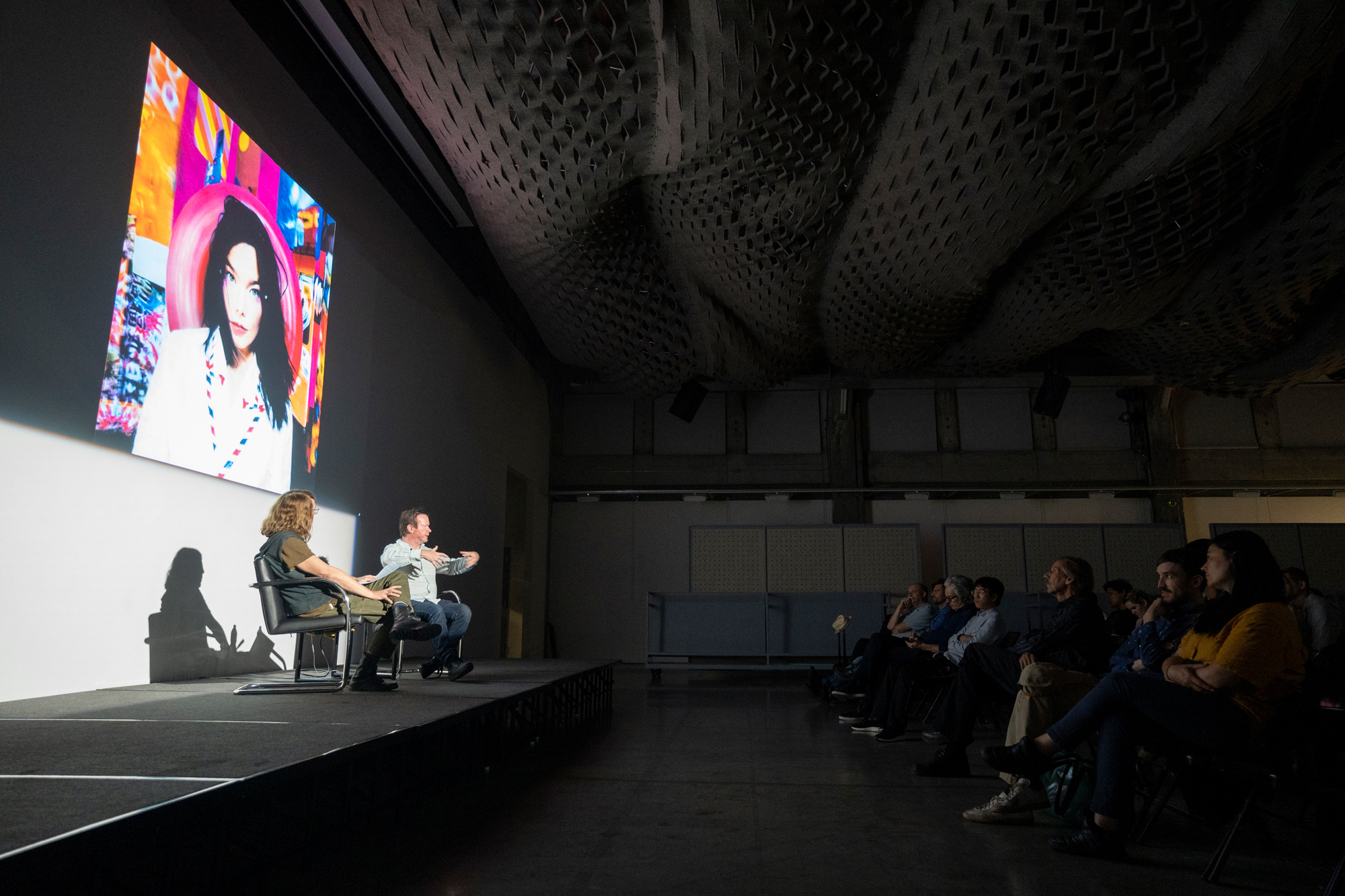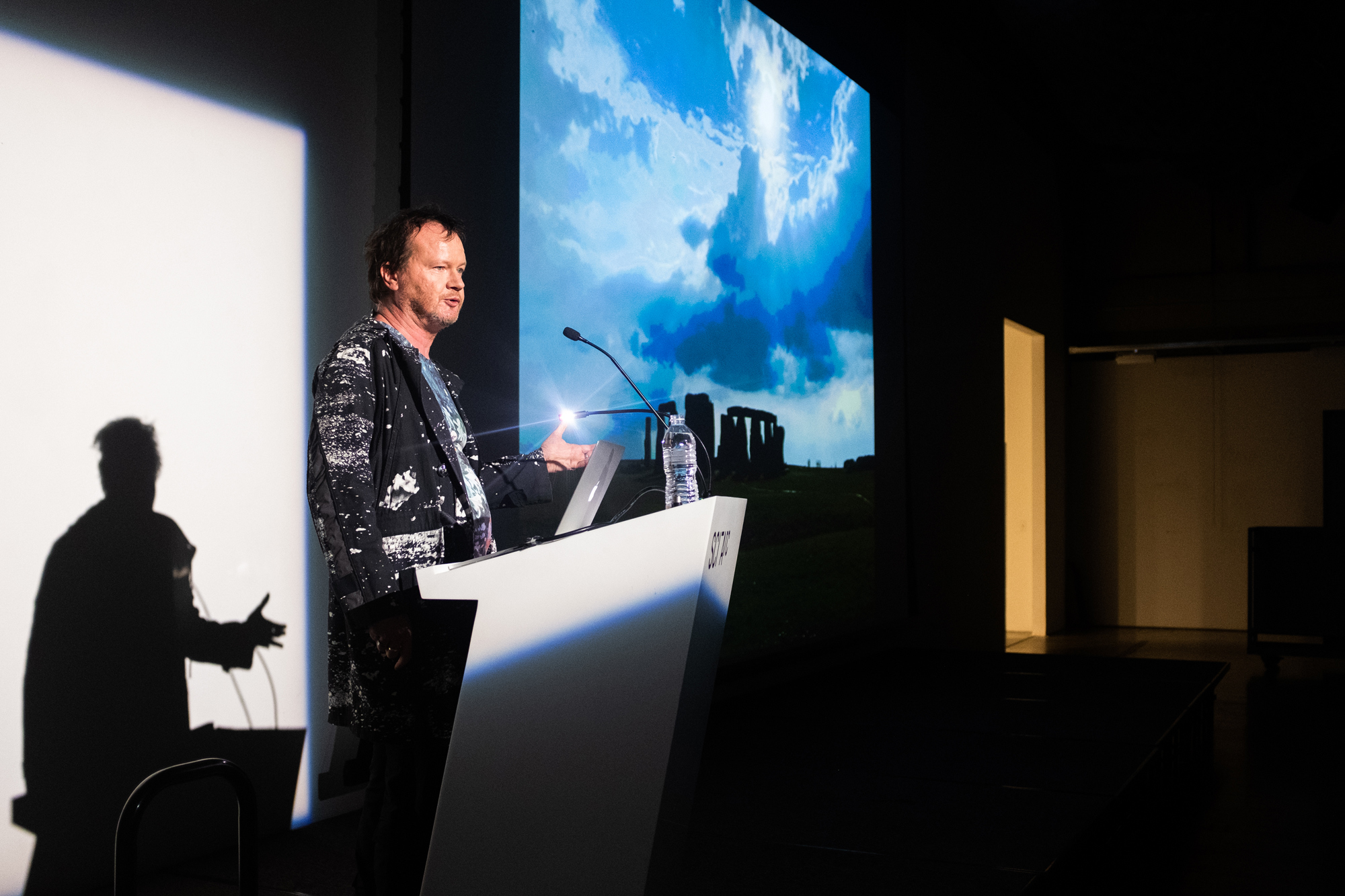Philosopher and Author Timothy Morton Evokes Ecological Solidarity in 'Synthesizers' Lecture
This past week author, educator, and philosopher Timothy Morton delivered a lecture at SCI-Arc entitled “Synthesizers,” as part of the school’s ongoing Liberal Arts Masterclass series. Most known for his book Hyperobjects: Philosophy and Ecology after the End of the World, a philosophical treatise which utilizes Object Oriented Ontology to deal with ecology and climate change, as well as his work with musical artist Bjork, the lecture capped off a week of programs, talks, and classes led by Morton at SCI-Arc’s Arts District campus.

“One of the greatest things about Tim is that he opens doors in philosophy; doors we didn’t even know were there,” said SCI-Arc Undergraduate Program Chair Tom Wiscombe of Morton in his introductory address. “He brings ideas of communication and empathy to the table—things that are sometimes difficult for philosophy to contend with—linking pleasure and kindness to deep ontological ideas about the universe. His goal is no less than to create solidarity between all things, human and non-human—a task that sounds as much a social project as one of philosophy.”
Opening the lecture with a personal anecdote, Morton spoke about how his experience of Hurricane Harvey as a Houston resident served as an analog to discuss the ecological implications of climate change and global warming. He proceeded to note Stonehenge as an ancient example of the at-odds relationship between human innovation and nonhuman results in the world, playing a clip from the satirical comedy film Spinal Tap to humorously demonstrate.
He went on to engage ideas about holistic visions of building which materialize in a way antithetical to what he termed the “whack-a-mole violence” of current design and building practices, instead advocating for a process of evolution in architecture which includes other life forms in design, making sure that materials used, “will last for thousands, hundreds, or even tens of years.”

Morton argued that in the Anthropocene, “something like landscape architecture, shorn of its landscape-stage design aestheticized anthropocentrism, would feel more like what we’re calling ‘synthetic landscape.’”
“Sure you’re making some sort of stage set, but you’re making it by blending with things as far as you can without dying, which would be inconvenient for everyone because dolphins can’t turn off the oil pipes with their flippers—this is on us, guys,” he inserted as a call to action addressed to the audience.
“The ecological future—if there is one—must be about pleasure, not efficiency,” he yielded. “Polar bears and coral being alive is pleasurable for them, and we can learn to enjoy that kind of pleasure ourselves.”
“After all,” Morton concluded, “quite a lot of other lifeforms are responsible for our very existence so it would be terribly nice to make sure they stick around.”
Wiscombe’s evocation of Morton in his introduction provided an appropriate encapsulation of the evening: “We find ourselves at the end of the world, not sad and depressed, but liberated by excess and pleasure!”
Livestream recordings of Morton’s Masterclass, Cinema Series installment and full lecture are available.